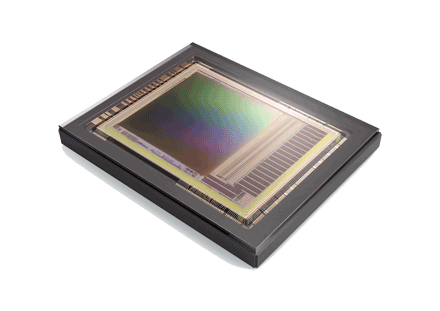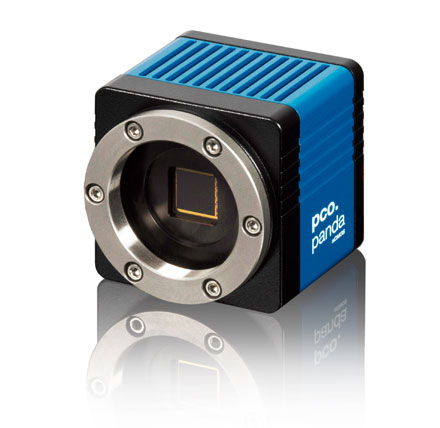|
Thursday, October 26, 2017 |
|

|
|
|

|
| sponsor |
 |
|
Broader Palette of Fluorescent Dyes Could Advance Biological Imaging
To better illuminate the inner workings of cells, researchers have developed a way to adjust the properties of fluorescent dyes deliberately, resulting in an expanded palette of dyes that are bolder, brighter and more cell-permeable. The novel technique could allow chemists to synthesize dyes in hundreds of different colors. The researchers focused on rhodamines, a family of fluorescent dyes that are especially bright and cell-permeable, but somewhat limited in their color range.
|
|
|
|
|
|
Label-Free Imaging Maps Whole-Brain Changes in Alzheimer Mouse Model
An imaging system called cryo-micro-optical sectioning tomography (cryo-MOST) could help speed new drug development for Alzheimer’s disease by offering a better way to monitor the brain changes indicative of Alzheimer's in mouse models. Cryo-MOST provides micron-level, 3D visualization of protein deposits, known as senile plaques, that are characteristic of the disease in humans and mice.
|
|
|
|
|
|
Photodetector Uses Ultrathin Materials to Increase Efficiency
A prototype developed using quantum mechanical processes could usher in a novel class of ultra-efficient photodetectors that would enable solar cells to turn the light they receive into multiple electrons. The prototype is based on the efficient multiplication of interlayer electron-hole (e-h) pairs in 2D semiconductor heterostructure photocells. To build the prototype, researchers stacked two atomic layers of tungsten diselenide (WSe2) on a single atomic layer of molybdenum diselenide (MoSe2).
|
|
|
|
|
|
 World’s Smallest True Global Shutter
World’s Smallest True Global Shutter
Teledyne e2v (UK) Ltd.
Teledyne e2v has launched its ground breaking new Emerald family of CMOS image sensors. This new product family features the world’s smallest true global shutter pixel available on the market today (2.8µm). With a smaller optical format and higher resolutions, the new sensors lead to improved performance and reduced system costs for customers.
Visit Website
Request Info
|
|
|
 sCMOS Newcomer pco.panda: Compact Design, Extended Performance
sCMOS Newcomer pco.panda: Compact Design, Extended Performance
PCO-TECH Inc.
Experiencing loss of image quality due to small form factor? Not with pco.panda! Despite ultra-compact measurements of roughly 65 x 65 x 65 mm with only 450 g weight, the new 16-bit sCMOS camera "pco.panda" provides high quantum efficiency up to 80 % and more than 40 fps at a full resolution of 2048 x 2048 pixels. The addition of the USB 3.1 interface has inherent advantages as it enables a new generation of cameras with fast data transfer and direct power via the USB cable.
Visit Website
Request Info
|
|
|
|
|
|
Using WGMs to Control Momentum of Light
A method to control the momentum of broadband light using whispering gallery microcavities (WGMs) could enable easier application of integrated photonic circuits. Optical devices typically require the coupling of light between different components. However, conservation of momentum usually limits the bandwidth of the coupling.
|
|
|
|
|
|
Technique Traps Light on Photonic Crystal Surface Using Tiny Ink Droplets
A microscopic 'pen' has been developed that uses a commercially available printing technique to write nanostructures that are small enough to trap and harness light. In a hybrid approach for creating and fine tuning high-Q nanocavities, researchers locally deposited organic ink droplets from an electrohydrodynamic printer onto the surface of an inorganic 2D photonic crystal template.
|
|
|
|
|
|
Indiana University Awarded $4M NSF Grant to Advance Medical Nanotechnology Read Article
Zeiss’ SMILE Laser Eye Surgery Reaches 1M Milestone Read Article
University of Colorado Researchers Obtain $2M Grant for Microscopy Read Article
BioTek Granted Autofocus Imaging Patent Read Article
Source Photonics Opens Manufacturing Facility in China Read Article
|
|
|
|
SEMICON Europa 2017
November 14-17, 2017 - Messe Munchen - Munich Germany
SEMICON Europa will feature the most advanced and innovative electronics manufacturing platforms in Europe. Technology and business programs will address the critical issues and challenges facing the microelectronics industries. Key segments will include: Materials, Semiconductor Front-end and Back-end Manufacturing, Advanced Packaging, MEMS/Sensors, Power and Flexible Electronics, applications such as the Internet of Things (IoT), Automotive and MedTech. Attendees will have the opportunity to engage and network with engineers, executives and key decision-makers.
|
|
|
|
Making Laser-Based Dermatologic Procedures Safer and More Effective
Thu, Nov 2, 2017 1:00 PM - 2:00 PM EDT
This webinar will introduce sonoillumination, a technique that uses ultrasound in conjunction with a clinical laser for dermatologic procedures such as the removal of birthmarks and tattoos. Sonoillumination transmits laser light only through direct contact with the skin, maintaining a safe environment for physician and patient throughout treatment. The ultrasound is applied throughout the procedure to further improve effectiveness by increasing the transmission of light through the epidermis by as much as 174 percent. The presenters will review current approaches to laser-based dermatological treatments, then will discuss sonoillumination, the experimental methods used to test the device, and results.
|
|
|
|
 |
|
|
|

CALL FOR ARTICLES!
Photonics Media is currently seeking technical feature articles on a variety of topics for publication in our magazines (Photonics Spectra, Industrial Photonics, BioPhotonics and EuroPhotonics). Please submit an informal 100-word abstract to Managing Editor Michael Wheeler at [email protected], or use our online submission form.
|
|
|
|